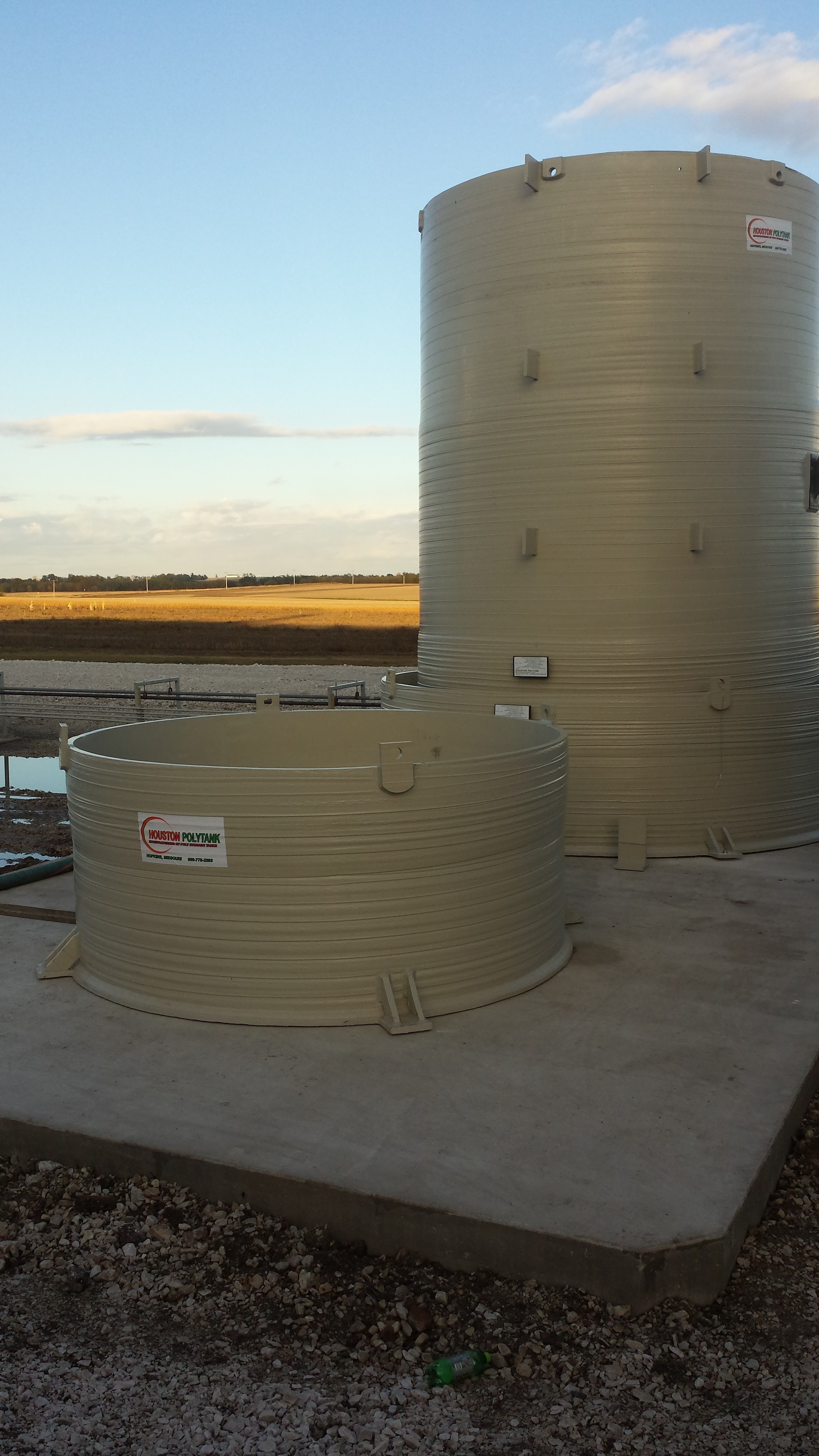As a part of our on-going series, “Where Will Your Tank Go?” we offer this article to discuss chemical storage and secondary containment options and requirements. This article will only address this issue in a very broad way and should not replace complete due diligence about particular industries, applications or chemical regulations.
Secondary Options Include:
- Containment area with single wall tank
- Double Wall Tank (tank inside tank) without containment area
- Double Wall Tank (tank inside tank) with a containment area.
Note: This option provides the strongest protection in case of leak from pumps, pipe, etc.
What are the containment requirements of your chemical storage tank?
Houston PolyTank tanks can be constructed with double wall secondary containment options.
Engineers need to think about the chemical itself and what other chemicals will be around it. To avoid potential hazardous situations, liquid chemical storage facilities need to be carefully constructed according to industry standards, safety regulations and common sense. For example, no engineer would house an acid next to a base liquid because it can create a potentially hazardous environment. There are laws in place to encourage companies to do everything possible to prevent aggressive chemicals from leaking into the soil, groundwater or surface water during the use of the tank system.
The engineers need to think through, “where will the liquid go if the integrity of the tank or if the fitting connections would be compromised?”
Houston PolyTank manufactures double-wall tanks that are part of a larger chemical storage containment system where we create a plastic tank inside a plastic tank. These two tanks are welded together to create a double-wall containment system that is then set in a secondary containment area in the facility. It’s important to account for the entire volume of the tank to ensure that if the tank breaks, the secondary tank can hold the entire volume of liquid. The connections of the primary tank will penetrate both walls, while the connections in the secondary tank will penetrate just the outside wall in order to drain the containment.
In building secondary containment tanks, one need is to vent the secondary tank as well as the primary tank. Also, it’s important to be able to monitor the space between the two tanks to confirm that the first tank is not compromised. If there is a leak into the secondary tank, the operator can notify Houston PolyTank so that we can make plans to correct the situation. Unlike others, Houston PolyTank can repair the tank to get it back into operation.
The best solution is to put a double wall tank within a containment area to have multiple levels of protection.
Need More Specific Chemical Storage Information?
You can find out more about containment system requirements at www.epa.gov
Your facility may also be required to meet other specific secondary containment requirements; to find out more, we suggest you consult with a local fire marshal for more localized information.


